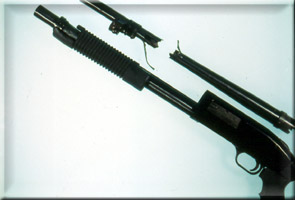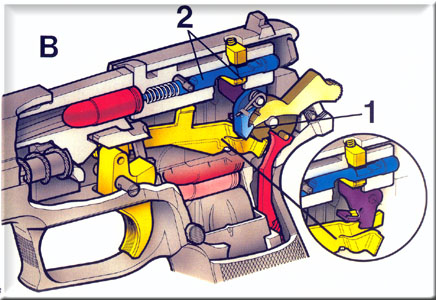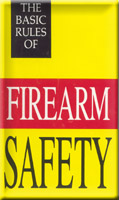
Certain firearms are inherently more unsafe than others, and have a
history of gun "accidents" related to that firearm design. Other guns may be
safe by themselves but are improperly handled leading to firearms accidents.
I've studied firearms designs internally and externally for more than 25
years, and am intimately familiar with most current & older firearms designs.
I've completed numerous armorer's courses (see Curriculum Vitae), and
toured numerous firearms & ammunition manufacturing plants. In the laboratory,
I've examined more than 20,000 firearms during my career. Every firearm I've
examined has been thoroughly tested to determine if it will fire "accidentally"
as a mechanical malfunction of the condition of the firearm. This experience
has given me the basis to have a practical first hand knowledge of what
constitutes good firearms design practices.

The following is a list of gun safety rules. Practice these rules and
your chances of having a firearms related accident will be greatly reduced.

 | Handle all firearms as if they were loaded. |
 | Always keep the firearm pointed in a safe direction. |
 | Keep your finger out of the gun's trigger guard and off the trigger
until you have aligned the gun's sights on a safe target and you have
made the decision to fire. |
 | Always be certain that your target and the surrounding area
are safe before firing. |
 | Whenever you handle a firearm, the first thing you should do
(while keeping it pointed in a safe direction with your finger outside
the trigger guard) is to open the action to determine whether or not
the firearm is loaded. |
 | Thoroughly read the instruction manual supplied with your firearm.
 | Before firing your weapon, you should routinely make sure
that your firearm is in good working order and that the barrel is
clear of dirt and obstructions. |
 | Only use ammunition recommended by the firearm manufacturer,
and always be certain that the ammunition matches the caliber of your
gun. |
 | Quality ear and eye protection should always be worn when shooting
or observing. |
 | Never use firearms while under the influence of drugs or alcohol. |
 | All firearms should be stored unloaded and secured in
a safe storage case, inaccessible to children and untrained adults. |
 | The transportation of firearms is regulated by Federal, State and local
laws. Always transport your firearm in a safe, unloaded condition and
in accordance with applicable laws. |
|
|








